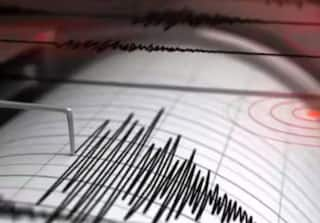Role Of AI In Fall Risk Assessment: Enhancing Safety Through Predictive Analytics
AI-powered technology greatly reduces the risk of complications and fatality by eliminating protracted lays, in which senior citizens are left unattended on the floor following a fall.

By Kanishka Acharya
Given the rise in the elderly population, protecting the security and well-being of seniors becomes a more serious matter. Falls are one of the most common and dangerous problems that older people encounter. However, advances in artificial intelligence (AI) and predictive analytics are transforming fall risk assessment, allowing caregivers to address fall-related issues proactively and improve safety.
Falls are a big concern with older people experiencing three falls a year on average, a figure that may be understated. Each fall occurrence poses the risk of serious bodily harm such as fractures, head traumas, and lacerations, which may necessitate hospitalisation. The average cost of hospitalisation for fall-related injuries is roughly INR 350,000 to 500,000 per incidence. Furthermore, falls frequently result in lengthy lays, in which a senior stays on the ground for an extended period, resulting in further difficulties and longer hospital admissions, increasing the financial burden on both seniors and the healthcare system.
Fortunately, AI-powered fall prevention systems can change the game by using predictive analytics to identify and mitigate fall risks before they cause accidents. Smart technology can minimise the average number of falls per senior citizen by 30 per cent per year by constantly tracking seniors’ movements and behaviours.
Doing the maths, for 100 seniors, this equates to 100 falls avoided each year, with each avoided hospitalisation saving around INR 350,000 in hospitalisation costs.
The enhanced capabilities of this technology go beyond fall avoidance. AI-powered technology greatly reduces the risk of complications and fatality by eliminating protracted lays, in which senior citizens are left unattended on the floor following a fall. According to studies, seniors who experience long lies have a 50 per cent greater mortality risk than those who obtain quick treatment.
The capacity of AI-driven fall risk assessment to generate ongoing data that provides insights into the actual care needs of seniors is one of its most important benefits. Non-Intrusive AI technology ensures that care plans are optimised to fit individual needs by seamlessly integrating with pre-existing Electronic Medical Record (EMR) systems and care management platforms. The continuous availability of data feeds allows caregivers to have better insights into the real care needs of seniors. This data-driven approach empowers caregivers to make informed decisions, leading to personalised attention and ultimately enhancing the safety and well-being of seniors.
In terms of Senior care, the use of AI in fall risk assessment has been groundbreaking. AI-powered solutions which use predictive analytics make proactive fall prevention possible, get rid of protracted falsehoods, improve caregiving productivity and satisfaction, and tailor care to each patient’s needs. These advances also significantly improve seniors’ satisfaction and safety while saving healthcare providers and systems hundreds of thousands of rupees annually. AI-driven solutions show great potential for the future of aged care as the older population continues to rise, enhancing seniors' safety and well-being and giving loved ones peace of mind.
(The author is the Founder & CEO at Welldercare, a company dedicated to meeting the needs of the ageing population and addressing the significant risk that falls pose to older adults)
Disclaimer: The opinions, beliefs, and views expressed by the various authors and forum participants on this website are personal and do not reflect the opinions, beliefs, and views of ABP Network Pvt. Ltd.






































